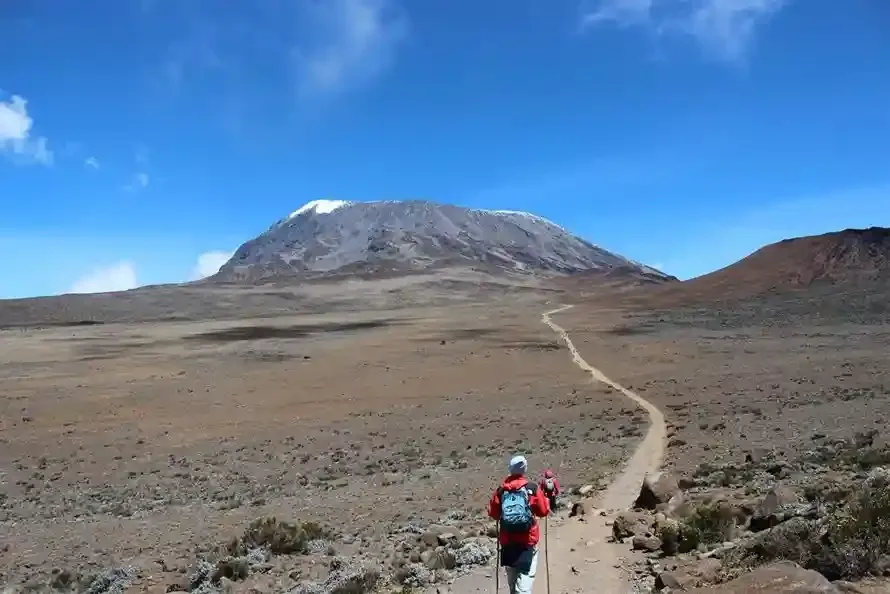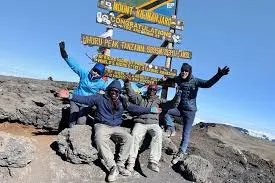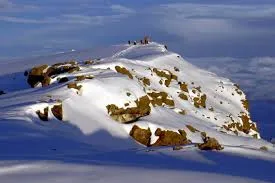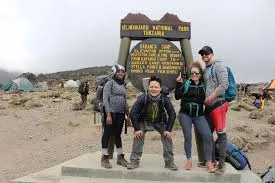Success Rate by Route: Which Kilimanjaro Route Is Safest?
When choosing a Kilimanjaro route, consider factors like acclimatization time, trail difficulty, and the experience level of your group. Routes with gradual elevation gain, such as the Lemosho and Machame routes, generally have higher summit success rates and lower risk of altitude sickness. Make sure to pace yourself, stay well-hydrated, and follow your guide’s advice to maximize safety. Below is a comprehensive overview of success rates by route, helping you choose the safest option for your Kilimanjaro climb with Capable Africa Tours.
Plan Your Safe Kilimanjaro Trek Now
Why Safety and Success Rates Matter on Kilimanjaro
Climbing Kilimanjaro is a thrilling challenge, but safety is paramount due to its high altitude (5,895 m / 19,341 ft) and variable conditions. The primary risks include acute mountain sickness (AMS), harsh weather, and physical exhaustion. Choosing a route with a high success rate and strong safety profile reduces these risks. Capable Africa Tours prioritizes safety with experienced guides, oxygen tanks, pulse oximeters, and gradual ascent itineraries to ensure you summit safely and enjoyably.
Factors Affecting Success and Safety
- Acclimatization: Longer routes allow gradual altitude gain, reducing AMS risk.
- Route Length: 7–9 day itineraries improve success rates (up to 90%) compared to 5–6 day routes (50–70%).
- Trail Conditions: Less crowded, well-maintained trails minimize accidents.
- Guide Expertise: Capable Africa Tours’ guides are trained in high-altitude safety and first aid.
- Weather: Dry seasons (Jan–Mar, Jun–Oct) offer safer, clearer trails.
Kilimanjaro Routes: Success Rates and Safety Comparison
Each Kilimanjaro route offers unique experiences, but success rates and safety vary based on duration, acclimatization, and difficulty. Below, we compare the seven main routes offered by Capable Africa Tours, focusing on quantitative success rates and qualitative safety factors.
Route Success Rates and Safety Data
| Route | Duration | Distance | Success Rate | Safety Factors |
|---|---|---|---|---|
| Lemosho | 7–8 days | 70 km / 43.5 mi | 85–90% | Gradual ascent, low crowds, diverse terrain |
| Northern Circuit | 8–9 days | 90 km / 56 mi | 90–95% | Longest route, best acclimatization, remote |
| Machame | 6–7 days | 62 km / 38.5 mi | 80–85% | Scenic, moderate crowds, good acclimatization |
| Marangu | 5–6 days | 72 km / 44.7 mi | 50–60% | Hut-based, shorter duration, higher AMS risk |
| Rongai | 6–7 days | 73 km / 45.4 mi | 80–85% | Remote, drier northern approach, good acclimatization |
| Umbwe | 6–7 days | 53 km / 33 mi | 60–70% | Steep, challenging, less acclimatization time |
| Shira | 6–7 days | 56 km / 34.8 mi | 70–80% | High starting altitude, moderate acclimatization |
- Lemosho: Ideal for safety with a gradual 8-day ascent, low crowds, and scenic diversity, reducing physical and mental strain.
- Northern Circuit: Safest overall due to its 9-day duration, offering the best acclimatization and remote trails.
- Machame: Popular and safe with a 7-day option, but busier trails may increase minor risks like slips.
- Marangu: Comfortable with huts, but its shorter duration increases AMS risk, making it less safe for beginners.
- Rongai: Safe with a dry northern approach and fewer crowds, ideal for wet season climbs.
- Umbwe: Riskier due to steep terrain and shorter acclimatization, suitable for experienced trekkers.
- Shira: High starting point (3,600 m) can challenge acclimatization, reducing safety for some climbers.
Watch Kilimanjaro Routes in Action
See the safest Kilimanjaro routes with Capable Africa Tours. This video showcases the Lemosho, Northern Circuit, and Machame routes, highlighting their safety features and stunning views.
How Capable Africa Tours Ensures Your Safety
At Capable Africa Tours, your safety is our priority. Our experienced guides, comprehensive safety protocols, and high-quality equipment ensure a secure climb. Here’s how we protect you on every Kilimanjaro route:
Safety Measures
- Trained Guides: Certified guides monitor health daily with pulse oximeters and adjust pacing.
- Emergency Equipment: Oxygen tanks, first aid kits, and emergency evacuation plans are standard.
- Small Groups: 1 guide per 2 trekkers ensures personalized attention and safety.
- Acclimatization Focus: Itineraries prioritize gradual ascents to minimize AMS risks.
- Quality Gear: We provide sanitized tents, sleeping pads, and optional gear rentals.
Choosing the Safest Route for You
Your fitness level, experience, and preferences determine the safest Kilimanjaro route. Beginners should opt for Lemosho or Northern Circuit for their high success rates and safety profiles. Experienced trekkers might enjoy Machame or Rongai for a balance of challenge and safety. Capable Africa Tours customizes itineraries to match your needs, ensuring a safe and rewarding climb.
Route Recommendations by Profile
- Beginners: Lemosho (8-day) or Northern Circuit (9-day) for optimal acclimatization and safety.
- Intermediate Trekkers: Machame (7-day) or Rongai (7-day) for scenic, safe climbs.
- Experienced Trekkers: Umbwe or Shira for challenging yet rewarding ascents.
- Comfort Seekers: Marangu for hut-based trekking, but prioritize 6-day itinerary.
Best Time to Climb for Maximum Safety
Timing your Kilimanjaro climb impacts safety and success. Dry seasons (Jan–Mar, Jun–Oct) offer stable trails and clear views, enhancing safety. Wet seasons (Apr–May, Nov) increase risks of slippery paths and poor visibility. Capable Africa Tours recommends the following:
Seasonal Safety Breakdown
| Season | Months | Safety Level | Pros | Cons |
|---|---|---|---|---|
| Dry (Peak) | Jan–Mar, Jun–Oct | High | Stable trails, clear views, low AMS risk | Higher crowds |
| Wet | Apr–May, Nov | Low | Fewer trekkers, lush scenery | Slippery trails, poor visibility |
| Shoulder | Dec, early Jun | Moderate | Balanced crowds, decent conditions | Unpredictable weather |
Preparation Tips for a Safe Kilimanjaro Climb
Proper preparation enhances safety and success. Capable Africa Tours provides pre-trek guidance to ensure you’re ready for Kilimanjaro’s challenges. Follow these practical tips:
Training and Gear Tips
- Cardio Training: Run, cycle, or swim 4–5 times weekly for 45–60 minutes to build endurance.
- Strength Workouts: Focus on squats, lunges, and core exercises for steep terrain.
- Practice Hikes: Train with a 5–7 kg daypack on hilly trails to simulate conditions.
- Gear Essentials: Waterproof boots, layered clothing, trekking poles, and a -15°C sleeping bag.
- Rentals: Rent gear like sleeping bags and down jackets from Capable Africa Tours to save space.
Climb Kilimanjaro Safely with Capable Africa Tours
Ready to conquer Kilimanjaro on the safest route? Capable Africa Tours offers expert-guided treks on Lemosho, Northern Circuit, and more, with a 90%+ summit success rate. Our safety-first approach, experienced guides, and all-inclusive packages ensure a secure, unforgettable adventure. Book now to secure your spot!
- 90%+ summit success on Lemosho and Northern Circuit
- Experienced guides with daily health monitoring
- Eco-friendly treks supporting local communities
- All-inclusive packages with gear rentals
- Customizable itineraries for all fitness levels
Limited spots for safe Kilimanjaro treks — book today to summit Uhuru Peak!
Plan Your Trek Now


